

Wales, a land steeped in history and myth, is home to some of the most magnificent and awe-inspiring castles in the world. With over 600 castles, each with its own story, the country offers a unique glimpse into a past where battles for power and dominion shaped the landscape. These castles are not just stone and mortar; they are the embodiment of Wales’ rich heritage, architectural innovation, and the enduring spirit of its people.
The castles of Wales serve as a testament to a tumultuous era, spanning from the early Middle Ages to the end of the Plantagenet reign. Constructed by Norman invaders and Welsh princes alike, they played crucial roles in military strategy, served as seats of power, and acted as administrative centers. Today, these structures range from ruins whispering tales of yore to well-preserved monuments, inviting visitors from around the globe to explore their halls and battlements.
This blog aims to traverse the captivating history of these fortresses, highlight the architectural marvels they present, delve into the conservation efforts ensuring their survival, and guide those wishing to explore these historical gems. From the majestic towers of Conwy Castle to the sprawling grounds of Caerphilly Castle, we will embark on a journey through time, uncovering the stories etched in stone and landscape. Whether you are a history enthusiast, an architecture aficionado, or simply in search of adventure, the castles of Wales offer a window into a past that continues to fascinate and inspire.
In the following sections, we will explore the historical background that led to the proliferation of castles across Wales, delve into detailed accounts of major castles, examine the ongoing efforts to preserve these cultural landmarks, and provide tips for those planning a visit. Join us as we uncover the allure and mystique of Welsh castles, monuments to the enduring legacy of Wales.
Historical Background of Castles in the Region
The story of castles in Wales is a saga of conquest, rebellion, and reconciliation, intricately woven into the fabric of Welsh history. The construction of castles in Wales can be traced back to the aftermath of the Norman invasion of England in 1066. As the Normans expanded their territory westward, they encountered the rugged landscapes and resilient people of Wales. The early Norman castles were primarily motte-and-bailey structures—earthen mounds with wooden or stone keep atop, surrounded by a fenced courtyard. These were quick to erect and served as effective fortresses in the Normans’ initial forays into Wales.
However, the Welsh landscape and the fierce resistance of its people demanded more formidable defenses. Thus began the era of stone castles, which not only provided greater security but also symbolized the permanence of Norman rule. Notable examples from this period include Chepstow Castle, one of the earliest stone fortresses in Britain, showcasing the transition from wood to stone in military architecture.
The 13th century marked a significant turning point with the campaigns of Edward I of England, aimed at the complete conquest of Wales. Edward’s strategy involved the construction of an “iron ring” of castles around North Wales. These structures were marvels of medieval engineering, designed not just for military dominance but also to assert English authority and influence over the conquered territories. The castles of Caernarfon, Conwy, and Harlech, among others, were part of this ambitious project, each serving as a bastion of English power and a center of administration.
The native Welsh princes, too, left their mark on the landscape with their strongholds. Castles such as Dolbadarn and Castell y Bere, built by the princes of Gwynedd, were strategic fortresses that played crucial roles in the Welsh resistance against Norman and later English encroachment.
Over the centuries, these castles witnessed numerous sieges, battles, and changes of hands, reflecting the turbulent history of Wales. The English Civil War and subsequent periods saw many castles fall into disrepair, their military importance fading as artillery technology evolved. It wasn’t until the 19th century that interest in these historical structures was rekindled, thanks to the Romantic movement’s fascination with medieval ruins. This period saw the first efforts at preservation and restoration, a sentiment that has grown stronger in modern times with increased awareness of cultural heritage.
Today, the castles of Wales are cherished not only as monuments of historical and architectural significance but also as symbols of Welsh identity and resilience. Their preservation is managed by various organizations, including Cadw, the Welsh Government’s historic environment service, and the National Trust. These bodies work tirelessly to ensure that the castles remain accessible to the public, providing a tangible link to the past and a source of national pride.
As we move on to explore some of the major castles in Wales, we will delve into the stories of their construction, their role in Welsh history, and the architectural innovations that make them stand out among the world’s medieval fortresses.
Castles in Wales
Conwy Castle: A Masterpiece of Medieval Military Architecture

Brief History: Conwy Castle, commissioned by Edward I during his conquest of Wales in the late 13th century, stands as a testament to medieval military strategy and royal ambition. Constructed as part of Edward’s “iron ring” of castles, its purpose was to assert English dominance over North Wales. The speed of its construction, completed in 1287, and the vast sums of money spent, reflect its importance to Edward’s campaign.
Architectural Highlights: Designed by the master castle builder James of St. George, Conwy Castle’s design is both imposing and ingenious. Its eight massive towers and connecting walls are remarkably well preserved, offering panoramic views of the surrounding town and estuary. The castle’s inner and outer wards were designed to house the royal entourage in luxury while maintaining formidable defenses.
Visitor Information: Conwy Castle is open to the public year-round, offering self-guided tours that allow visitors to explore its towers, battlements, and remaining residential quarters. The nearby town of Conwy, encircled by its own ancient walls, provides a charming backdrop to the castle, making it a must-visit for anyone touring Wales.
Caernarfon Castle: Symbol of English Power

Brief History: Like Conwy, Caernarfon Castle was also built by Edward I as part of his campaign to conquer North Wales. Its construction began in 1283, on the site of a pre-existing Norman castle. Caernarfon was intentionally designed to be a symbol of English power and the seat of government for the new territories.
Architectural Highlights: Caernarfon is renowned for its unique polygonal towers, a departure from the more standard round towers found in other Edwardian castles. The castle’s walls and towers are imbued with color-coded stones arranged in bands, a feature inspired by the walls of Constantinople, designed to evoke a sense of imperial Roman grandeur.
Visitor Information: Today, Caernarfon Castle is recognized as a UNESCO World Heritage Site, attracting visitors from around the globe. It hosts the Museum of the Royal Welch Fusiliers and offers educational tours that highlight its history and architecture. The castle’s Eagle Tower is particularly notable for its breathtaking views.
Cardiff Castle: A Confluence of Centuries
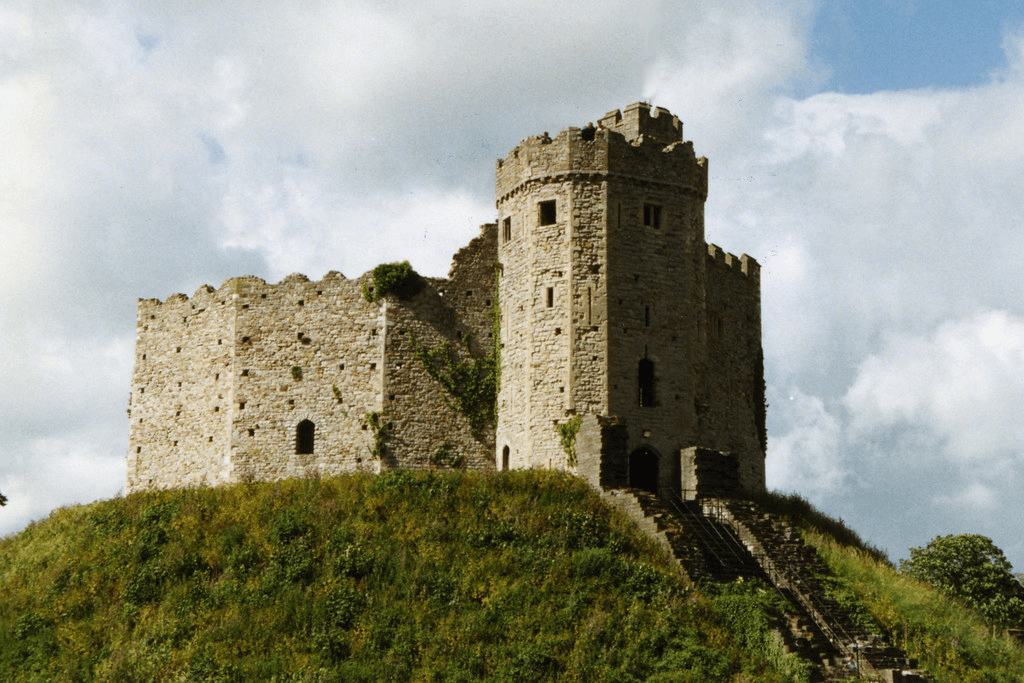
Brief History: Cardiff Castle’s origins date back to the Romans, who established a fort on the site in the 3rd century. However, it’s the Norman keep built in the 11th century that forms the heart of the current complex. Over the centuries, the castle has evolved, with significant Victorian-era renovations adding Gothic revival elements.
Architectural Highlights: The castle’s eclectic architecture reflects its layered history, with the Norman keep, the Roman walls, and the Victorian fantasy palace blending seamlessly. The Marquess of Bute’s influence is evident in the elaborate interiors, designed by William Burges, featuring intricate wood carvings, stained glass, and murals.
Visitor Information: Cardiff Castle offers a variety of tours, including access to the wartime shelters and the luxurious Bute family apartments. Its location in the heart of Cardiff makes it easily accessible and a focal point for visitors to the city.
Caerphilly Castle: A Fortress in Water
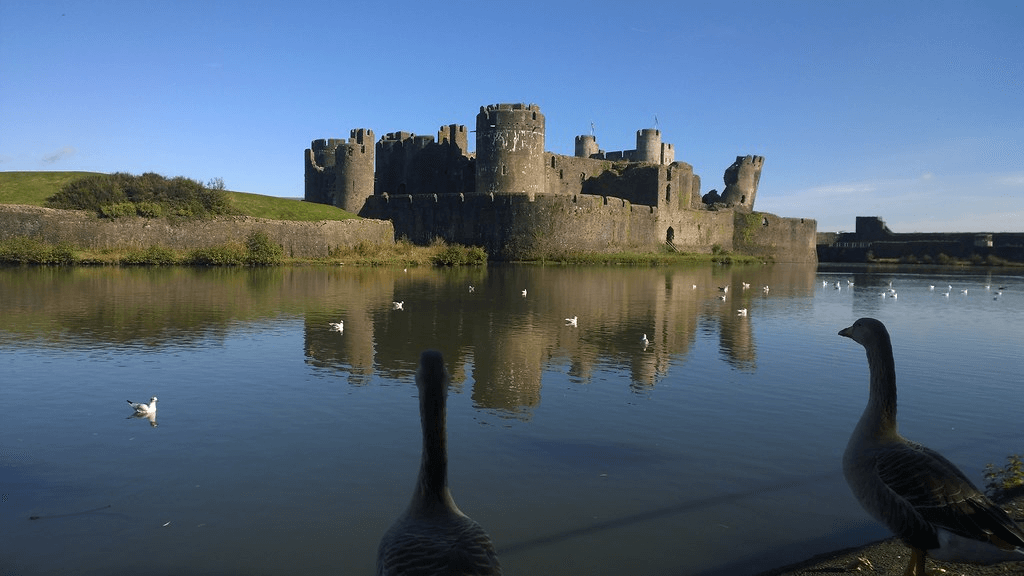
Brief History: Built in the late 13th century by Gilbert de Clare, Caerphilly Castle is the largest castle in Wales and the second-largest in Britain. It was constructed as a response to local Welsh uprisings, showcasing advanced military design with its extensive use of water defenses.
Architectural Highlights: The castle’s most notable feature is its concentric defenses, with multiple lines of fortification making it virtually impregnable. The artificial lakes surrounding the castle not only served as a defensive barrier but also added to its aesthetic appeal. The leaning tower of Caerphilly, caused by subsidence, rivals the more famous Leaning Tower of Pisa in its inclination.
Visitor Information: Visitors can explore the castle’s grand halls, towers, and gatehouses, with interactive exhibits bringing its history to life. The castle grounds are also the setting for various events, including medieval reenactments and fairs.
Powis Castle: A Testament to Nobility and Grandeur
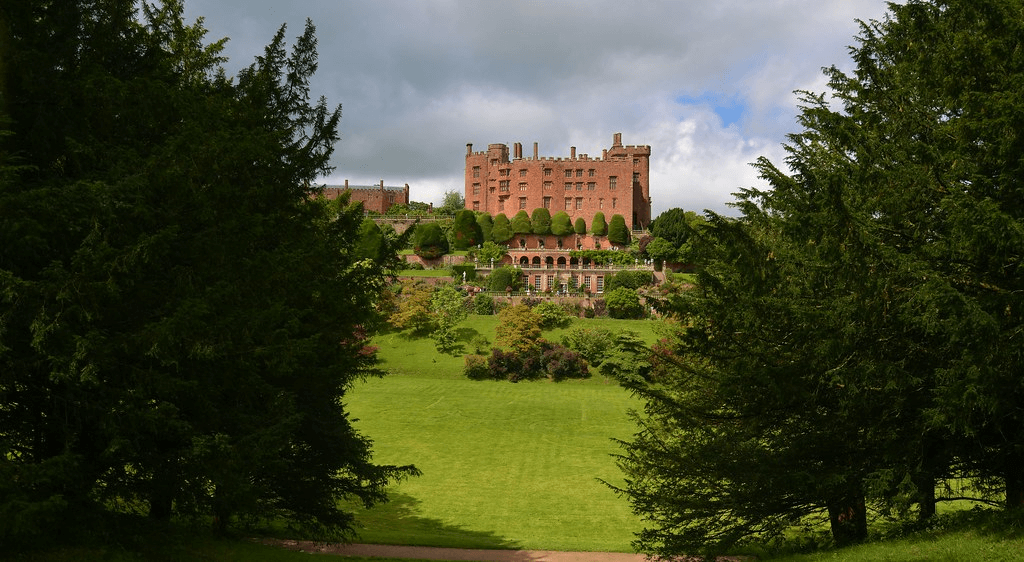
Brief History: Unlike the primarily defensive castles built by Edward I, Powis Castle originated as a medieval fortress for the Welsh princes in the 13th century. It underwent significant transformations over the centuries, especially in the 17th century when it became a grand residence, reflecting the tastes and aspirations of its noble inhabitants.
Architectural Highlights: Powis Castle is renowned for its impressive terraced gardens, Italianate in style, offering stunning views and a tranquil escape. The castle itself blends medieval military architecture with the opulence of a stately home, housing a remarkable collection of paintings, tapestries, and furniture.
Visitor Information: Open to the public, Powis Castle and its gardens offer a glimpse into the life of the aristocracy through the ages. The property, managed by the National Trust, hosts various events throughout the year, including garden tours and historical exhibitions.
Harlech Castle: A Sentinel Overlooking the Sea
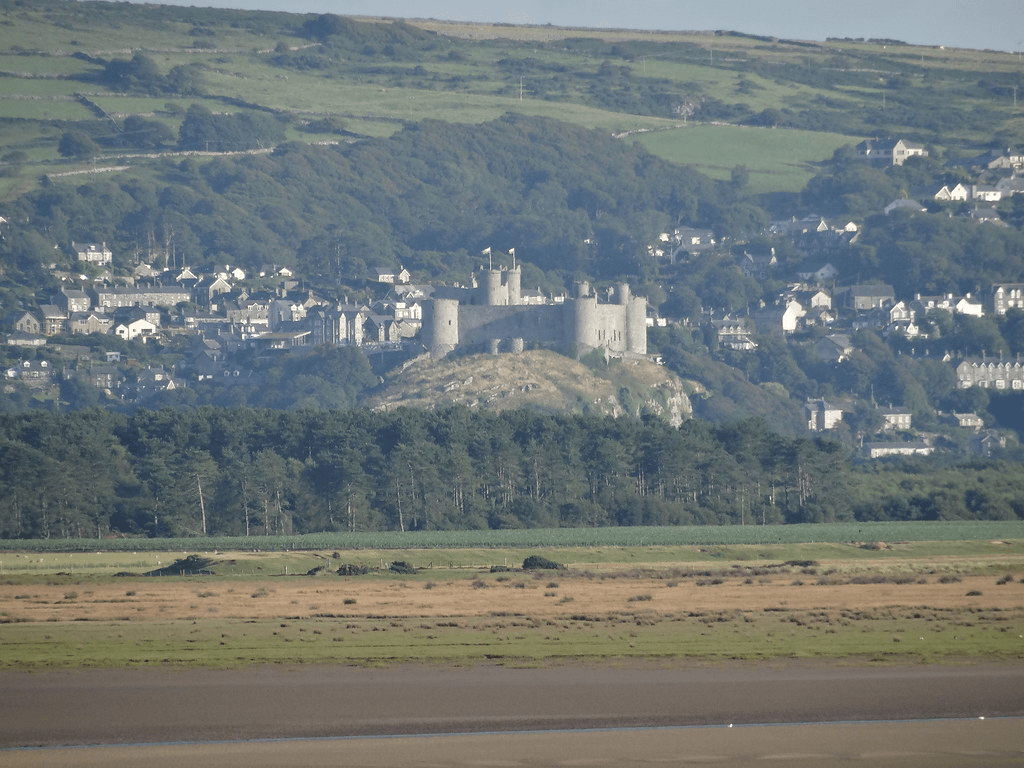
Brief History: Constructed by Edward I during his second campaign in North Wales around 1283, Harlech Castle stands on a cliff face, offering strategic views over land and sea. It played a key role in several historical conflicts, including the Wars of the Roses, where it became a symbol of steadfast resistance.
Architectural Highlights: Harlech’s design is a masterpiece of concentric castle construction, with walls within walls providing formidable defenses. The castle’s gatehouse is particularly notable, equipped with murder holes and portcullises, showcasing medieval military ingenuity.
Visitor Information: Managed by Cadw, Harlech Castle offers visitors the chance to explore its towers and ramparts, with interactive displays recounting its history. The castle’s dramatic setting and panoramic views of Snowdonia and the Irish Sea make it a captivating destination.
Beaumaris Castle: The Last and Largest of Edward's Iron Ring
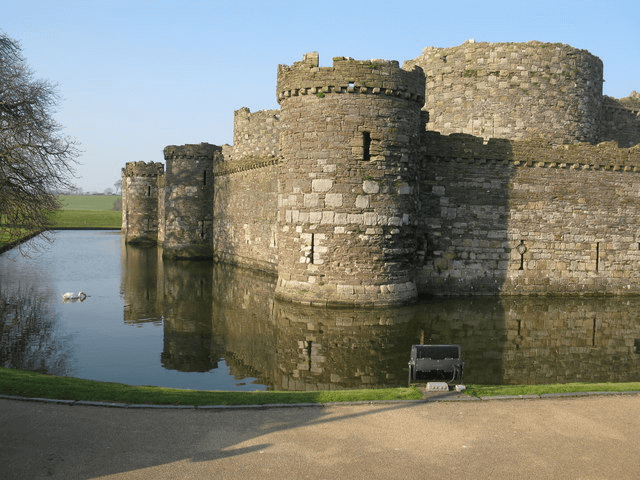
Brief History: Begun in 1295, Beaumaris Castle is considered the most technically perfect castle in Britain, with its design reflecting the culmination of Edward I’s castle-building ambitions in Wales. Despite its architectural perfection, the castle was never fully completed due to financial and political pressures.
Architectural Highlights: Beaumaris is celebrated for its perfect concentric design, with symmetrical inner and outer walls and a wide moat. Its ingenious structure includes a series of connecting doorways, allowing defenders to move quickly in times of siege.
Visitor Information: Today, Beaumaris Castle, a UNESCO World Heritage Site, invites exploration of its tranquil yet formidable grounds. Visitors can walk the walls and view the castle’s unfinished sections, which tell a story of ambition halted by the tides of history.
Photo Author G Laird
Castell Coch: A Victorian Fantasy on Medieval Foundations
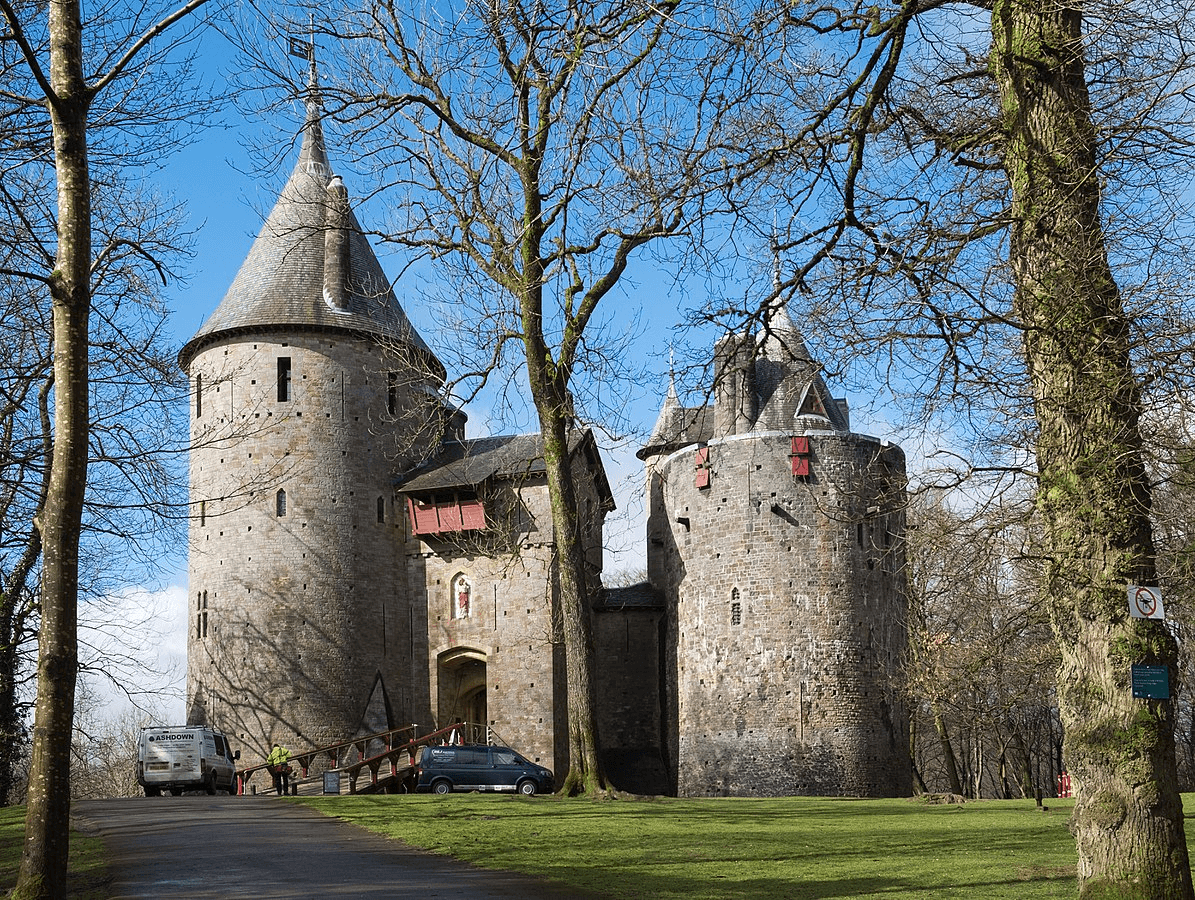
Brief History: Castell Coch (Red Castle) stands on the foundations of a 13th-century fortress but was extensively rebuilt in the 19th century for the 3rd Marquess of Bute by architect William Burges. The castle is a prime example of Gothic Revival architecture, embodying the Victorian era’s romantic vision of the Middle Ages.
Architectural Highlights: The castle’s fairy-tale appearance, complete with conical roofs and ornate decorations, hides a wealth of medieval-inspired interiors. The richly decorated rooms, including the Banqueting Hall and Lady’s Bower, feature intricate woodwork, murals, and stained glass.
Visitor Information: Castell Coch is open to the public, offering guided tours that highlight its design and the stories of its inhabitants. Situated near Cardiff, it provides a picturesque retreat into a fantasy world inspired by medieval legends and architecture.
Photo Author DeFacto
Chepstow Castle: A Chronicle of Continuity
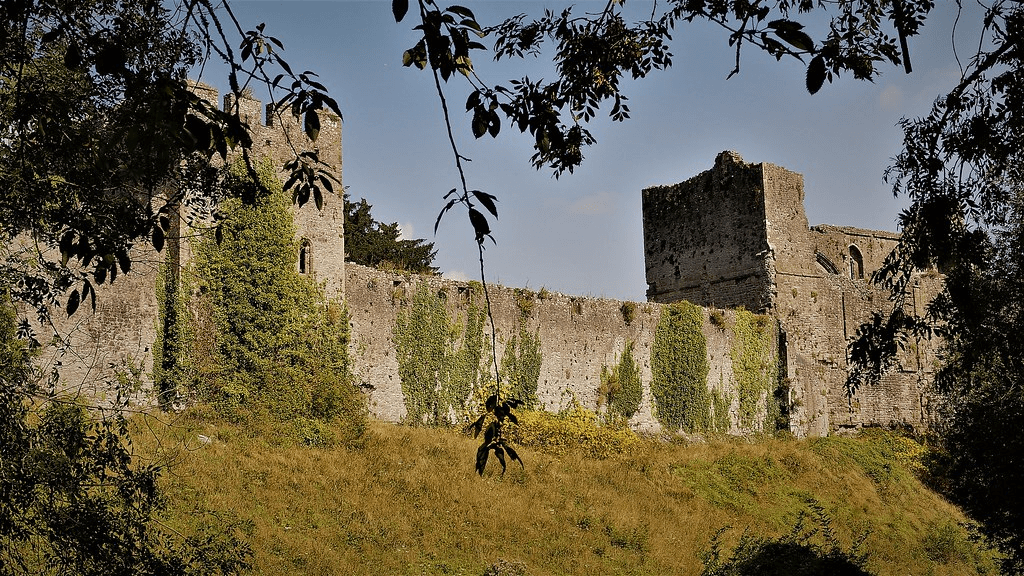
Brief History: Chepstow Castle, one of the oldest surviving post-Roman stone fortifications in Britain, was begun in 1067, closely following the Norman invasion. Its strategic location above the River Wye served to control access to the river and the border between England and Wales.
Architectural Highlights: The castle’s extensive development over 600 years showcases the evolution of military architecture, from its 11th-century Great Tower to later additions designed to withstand artillery. Chepstow’s cliff-side position and sprawling design reflect its adaptive history.
Visitor Information: Managed by Cadw, Chepstow Castle invites visitors to explore its ancient walls and towers, offering insights into the lives of its medieval inhabitants. The castle’s position provides stunning views of the surrounding countryside and river.
Raglan Castle: The Elegance of Ruin
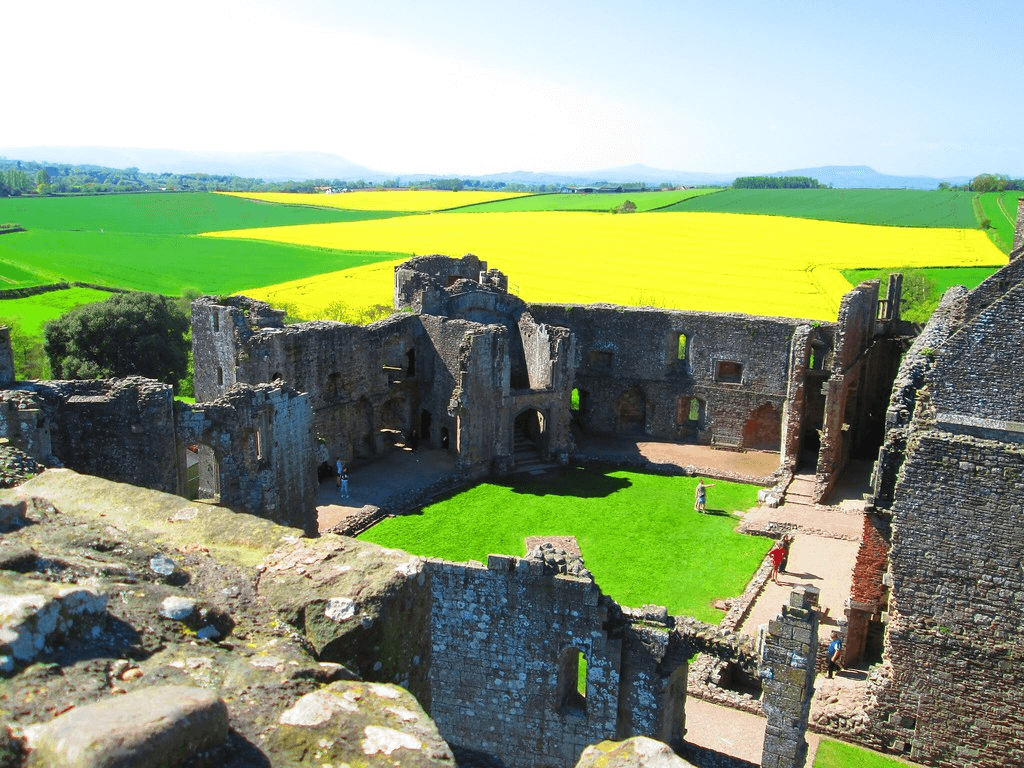
Brief History: Raglan Castle, begun in the 15th century, represents a shift from military stronghold to luxurious residence. Its construction in the late medieval period introduced features more aligned with comfort and status, marking the castle as a palace designed for show rather than defense.
Architectural Highlights: Despite its ruinous state, Raglan’s grandeur is undeniable, with its Great Tower and moated gatehouse reflecting the wealth and taste of its noble owners. The castle’s blend of defensive and residential architecture offers a glimpse into the transition to more peaceful times.
Visitor Information: Visitors to Raglan Castle can wander through its remains, imagining the opulence that once filled its halls. The site, managed by Cadw, hosts events that bring its history to life, set against the backdrop of the Welsh countryside.
